Zell am See is an attractive resort on the shore of Austria’s most scenic lake. It offers substantial, mainly intermediate, skiing – backed up by a snow-sure glacier on the Kitzsteinhorn Glacier above Kaprun.
Altitude: 758m
Lifts: 49
Top lift: 3029m
Ski area: 138km of piste
Adult lift pass: €232 for six days
Official Site |
Ski Map |
Webcam
Resort Overview
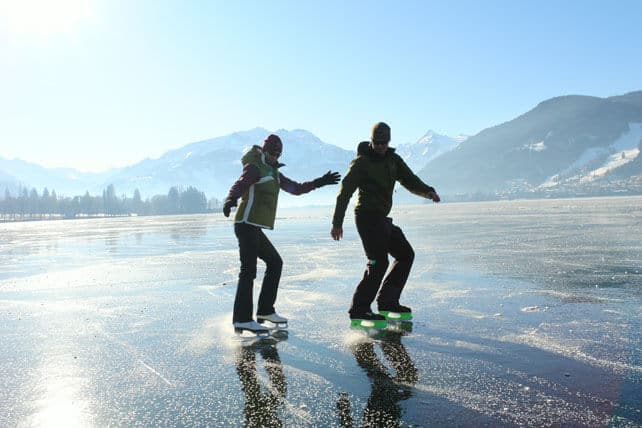
Set in a broad Alpine valley by the side of a sparkling lake, Zell am See has been an important town in the Salzburgerland since at least the Middle Ages. It now makes its living from tourism and in winter acts as the gateway to a mid-sized ski area of considerable contrasts.
Immediately above town rises the 2000m Schmittenhohe – which offers a pretty mix of intermediate-friendly pistes both above and below the treeline. Meanwhile, 13km to the south, lies the other main skiing sector, on the Kitzsteinhorn. Here, the slopes rise to a more snowsure 3030m, offering skiing not just in winter, but in autumn and the first half of summer too. In fact, it’s one of the best areas for early-season skiing we know.
Zell am See and Kaprun are the two main bed bases. With its magnificent lakeside setting and medieval buildings, Zell is the more distinctive of the two: a kind of see-side Kitzbuhel, peppered with smart hotels and boutiques, and the villas of wealthy Salzburgers.
The less cosmopolitan destination of Kaprun, 8km up the road, is more of a traditional ski village. It has its own little mountain – the 1675m Maiskogel – but it’s best seen as a launchpad for days on the mighty Kitzsteinhorn. The lift station is 5km south of the village, and there are regular buses linking the two.
Access to Zell am See is unusually good for a mountain resort. It’s only 60 minutes’ drive from Salzburg airport, and there are regular shuttle buses too. Trains from Salzburg’s main railway station into the middle of town take 90 minutes. Parents with young children, and weekend skiers, will like the short transfer times: and day trips back into Salzburg are perfectly feasible for anyone who wants a day off from the slopes.
A Short Guide to the Skiing in Zell am See and Kaprun
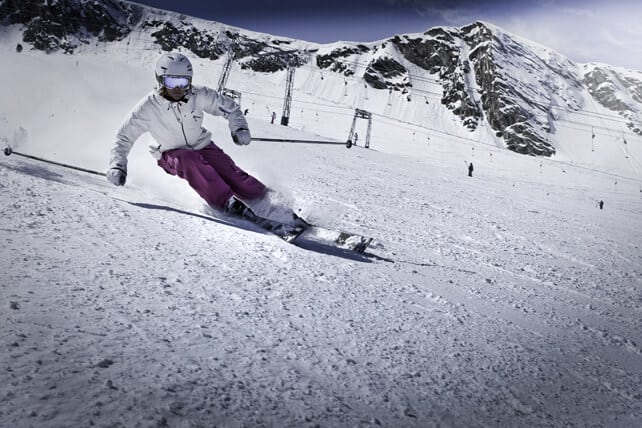
The skiing in Zell am See and Kaprun is split into two main sectors – Schmitten, above Zell am See, and the Kitzsteinhorn just south of Kaprun. A third, smaller area of pistes, on the 1675m Maiskogel, sits on the edge of Kaprun.
The Kitzsteinhorn offers a lot more than a few easy glacier pistes
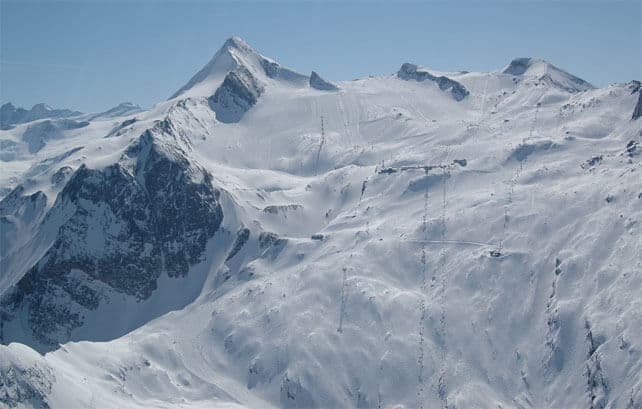
The Kitzsteinhorn, pictured above, is the jewel in the crown for both Zell am See and Kaprun – a high, snowsure area with lift-serviced skiing between 3030 and 1978m. It’s open from late September/early October to the middle of July.
The glacier at the top ensures the long season: but in the late autumn, winter and early spring there’s a lot more to do than cruise a few intermediate-friendly pistes. From mid October, there’s a big terrain park on offer here – home to Austria’s largest super-pipe.
Meanwhile, after a dump, off-pisters will find a number of tasty descents through the powder, close to the pistes. In fact, the area is actively promoting freeriding, with information boards, and a transceiver-training area. Every Monday morning from late November to early May, you can also sign up for two and a half hours of off-piste training (€85 in 2014-15), with classes for first-timers as well as more experienced powder pigs.
In a further bid to boost its hard-skiing image the Kitzsteinhorn has also recently opened the Black Mamba piste. At a maximum gradient of 32 degrees it’s by no means the steepest piste in Austria (that honour belongs to the Manfred Pranger at Wipptal, which is 46 degrees), but it’s a popular run nonetheless. Here’s the promotional video.
ARVE Error: For the maxwidth (maxw) option you need to have normal or lazyload mode enabled, either for all videos in the plugins options or through shortcode e.g. [youtube id=123456 mode=normal maxw=999 ].
All in all, there’s a great mix of skiing here – although visibility is non-existent when it’s foggy or blowing a blizzard. In that case, it’s much better to retreat to the treelined pistes of the Maiskogel or the Schmittenhohe. The other significant drawback is overcrowding in peak weeks, especially when it’s mild and conditions are slushy in lower ski areas nearby.
At times like that, the glacier acts like a giant magnet – sucking up skiers from what feels like half of the Salzburgerland. If it looks like it’s going to be one of those days, we’d recommend sticking to Schmitten or the Maiskogel.
Schmitten is not as scary as it looks on the piste map
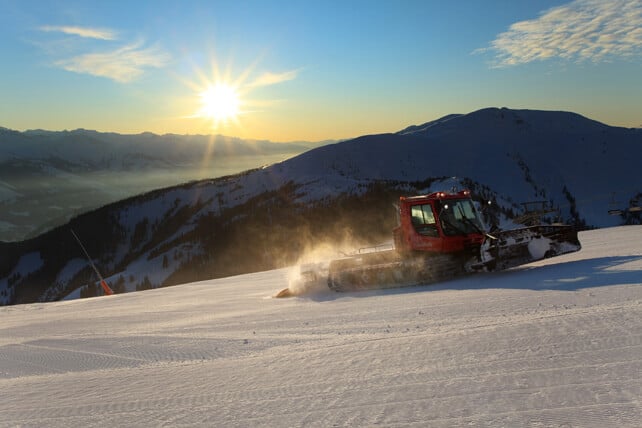
The 2000m Schmittenhohe is accessed by lifts from both Zell am See and the suburb of Schuttdorf. The gondola from Schuttdorf is the easiest way up, but as most visitors will want to stay in Zell am See itself, they’ll have to get used to a three-stage journey involving a mix of gondolas and chair-lifts.
Pistes cover almost every aspect of the mountain – north, east, south and west – and a glance at the map gives the impression that the skiing here is tough, thanks to all the blacks on the slopes immediately above Zell. In fact, in many other resorts most of these would be graded as reds, and the whole area is ideally suited to intermediates, especially when there’s fresh, cold snow on the slopes, newly-groomed. It’s only when conditions are icy that it becomes more testing.
In mid-winter there are decent nursery slopes at the bottom of the slopes near Zell am See and at Schuttdorf. But we wouldn’t recommend them after mid-February as they are very low, and susceptible to daytime melting/overnight refreezing during a thaw. In fact, we’d advise saving the whole of Schmitten for a mid-winter trip. 85% of the pistes are covered by snow cannons, but all the same, all of them are below 2000m, which means the snow quality will vary considerably as the weather warms up.
Maiskogel is your bad-weather refuge if you’re staying in Kaprun
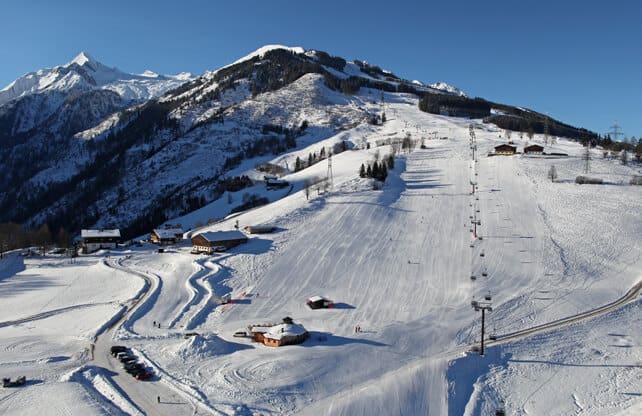
Maiskogel is the third sector of slopes covered by the lift pass, and really only of interest to those staying in Kaprun. Its easy-skiing, treelined pistes are a good place to retreat to whenever visibility is poor up on the Kitzsteinhorn.
Ski Schools in Zell am See and Kaprun
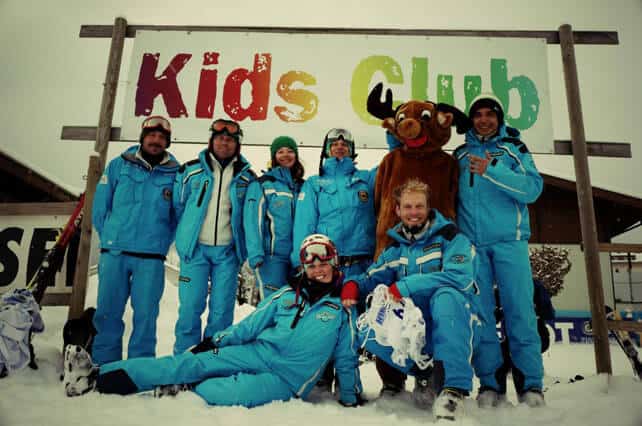
There are eight ski schools in Zell am See and eight in Kaprun, including Sport-Alpin, which has five offices in Zell am See and Schuttdorf and is rated ‘excellent’ by reporters. Very active up on the Kitzsteinhorn is Hartweg’s Ski Mit Uns school, which runs freestyle camps and workshops, powder-skiing clinics and race-training, as well as regular group and private lessons. Werner Schuh’s All Mountain school is also highly-rated. The three mountain guiding companies are Alpin Guide Hager and Offpiste in Zell, Bergfuhrerteam in Kaprun.
The ski schools on the Schmitten, the Kitzsteinhorn and the Maiskogel areas accept children from three years, and the emphasis is on fun just as much as making pizza shapes with your skis. However, we’d recommend saving your children’s first group ski lessons until the they are four years old, at least.
English-speaking families should take particular note of the recent arrival of family-skiing specialist Mark Warner in town for the 2014-15 season, as its kids’ clubs and nurseries are well-organised and a ready-source of playmates for your kids. Locally, several of the ski schools offer kindergartens for non-skiing children, such as The Snowsport Company.
Where to Stay in Zell am See
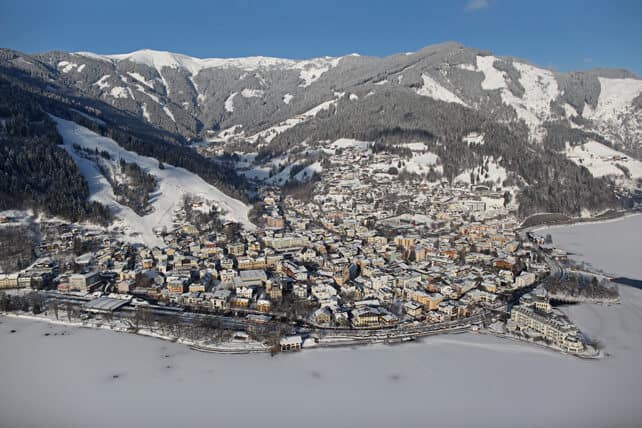
As you’d expect in a lakeside resort with a busy summer season as well as a winter one, there are some lovely hotels in Zell am See. Top of any luxe-lover’s list should be the five-star Hotel Salzburgerhof, which has a sensational spa. and a free on-demand shuttle bus connecting the hotel and the slopes.
The four-stars include the Romantikhotel Zell am See, which has rooms with panoramic views of the lake (‘excellent – rooms are spacious, if a bit overheated’) and a lovely, newly-expanded spa, with both indoor and outdoor pools. It’s a five-minute walk from the lift, and there are shuttle buses in the morning (the hotel also has a ski deposit by the lifts so you don’t have clump along the pavements in your ski boots).
Meanwhile, Hotel Berner is genuinely ski-in ski-out, and only 70m from the cable car. It also has a heated outdoor pool. Hotel Fischerwirt is highly rated: ‘Lovely rooms, full English breakfast, and a four-course dinner. We would all return without hesitation’. Try to get one of the renovated comfort or superior rooms if you can.
Most hotels in Zell am See have a traditional Austrian flavour. Rather different is Hotel Living Max which offers clean, modernist lines, a funky restaurant, and – in summer – personal triathlon training.
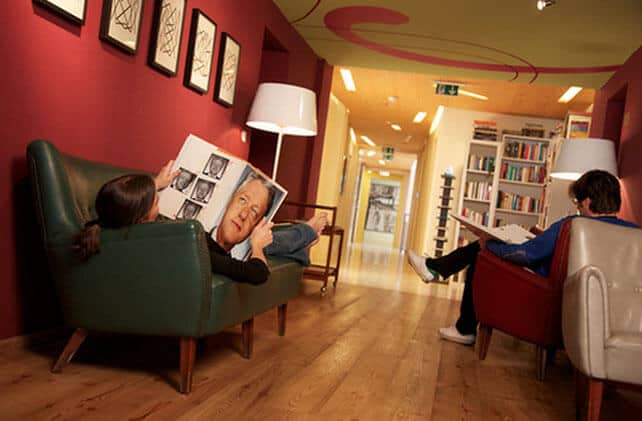
Boutique Hotel Steinerwirt 1493 also offers a change of from the norm. All furniture has been made from solid, untreated spruce and special attention has been given to technology and communication. The hotel contains an art space complete with artists in residence, a restaurant serving innovative Austrian cuisine, a miniclub with activities from age two years, and free childcare during adult dinner time.
Three-stars include the Hotel Schönblick, in the suburb of Schuttdorf, which was praise heaped upon it by a reporter: ‘Nothing was too much trouble. The food was excellent and the hotel had a warm friendly feel’. Hotel Pension Hubertus was rated ‘superb – great location and a good breakfast always served with a smile and a personal touch’.
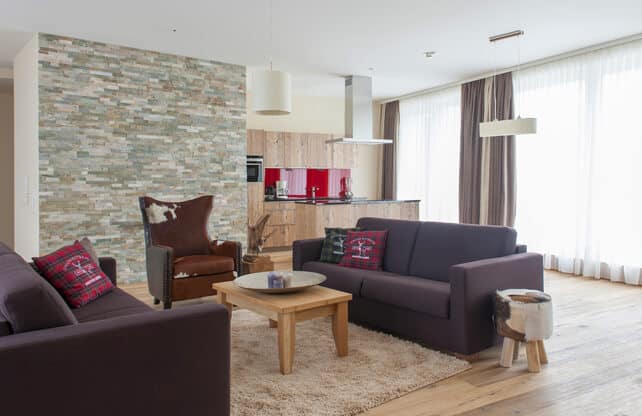
Mountain Lake Resort is from family-skiing specialist Mark Warner. It’s a change from the company’s usual chalet-hotel formula. It offers the usual Mark Warner range of English-speaking childcare and kids’ clubs, as well as breakfast, tea and dinner, but the rooms are all apartments with their own kitchens – a real boon for families travelling with toddlers and babies.
One other family-friendly option is the Hagleitner Kinderhotel. It’s in the suburb at Schüttdorf, so not great if you want to stroll around Zell am See’s town centre at night. But it’s home to 45 family rooms and daily in-house childcare for kids from three months old.
Where to Stay in Kaprun
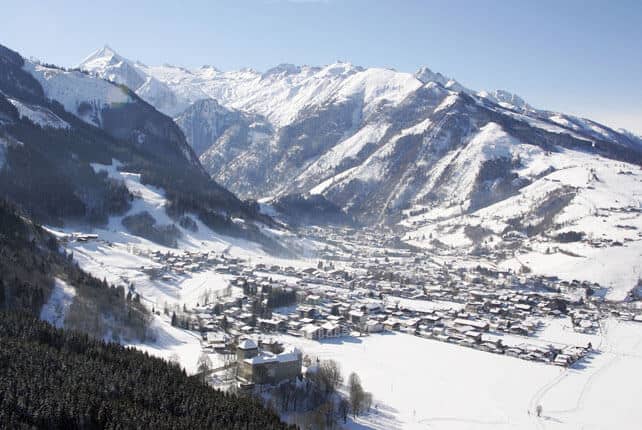
Active by Leitner’s Style Hotel & Spa is a modern hotel run like an action-packed club. As well as skiing and snowboarding, the owners arrange tobogganing and snowball-throwing parties. Four-star superior Alpen-Wellness Hotel Barbarahof has a good spa and is next to the ski school meeting place (‘excellent service and food’). All of its rooms are furnished differently, and in a refreshingly colourful and modern style, to boot.
Hotel Rudolfshof is part of the Kinderhotels network, and offers family rooms and suites, a spa and childcare. Hotel Sonnblick is decorated in modern Tyrolean style. Meanwhile, Hotel Tauernhof is in the centre of the village at the bottom of the nursery slopes (‘excellent food and ideal for first-time skiers’).
Where to Eat
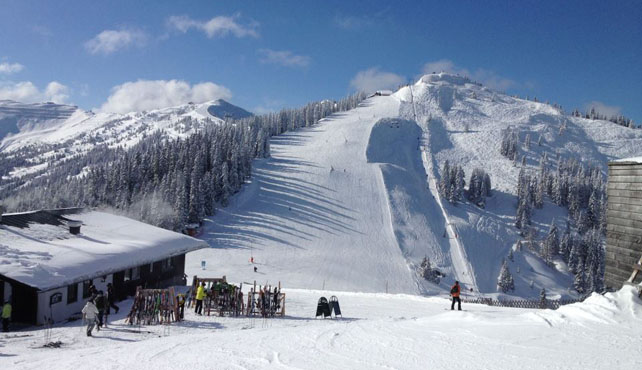
If all you know are the over-priced “selfs” and table-service restaurants of France, you’re in for a treat. Several of the mountain restaurants on Schmittenhöhe, above Zell am See, are family-run, homely, and fantastic value for money. Soups for €3.50, beef goulash for €7: this is the kind of place you can sit down and have a proper meal, with drinks, and still have change from €20.
Schmiedhofalm, near the top of the ski area, is the place to go for local Pinzgauer specialities, while Hochzeller-Alm offers a fantastic mountain panorama from its sun terrace, and hearty home-cooked Austrian favourites, such as Schnitzl and Gröstl. The Breiteck Alm is recommended, too – try the Blutwurstgröstl fry-up-in-a-pan, but don’t expect to be able to stand up again quickly afterwards. Meanwhile, Jaga-Alm serves local game dishes. On the Kitzsteinhorn, Bergrestaurant Gletschermühle (+43 6547 8621371) is popular, and not at all like your usual glacier eating-sheds.
In the evening, nearly all the best restaurants are in the hotels. In Zell, the Steinerwirt is recommended for its innovative cuisine and 14th-century wine cellar. Others include the Kupferkessel, Hotel St Georg, Zur Einkehr (+43 6542 72363), Landhotel Erlhof, and the Salzburgerhof – all of which are worth a visit. Reporters praised Antonio’s Basmati for its curry.
Where to Party
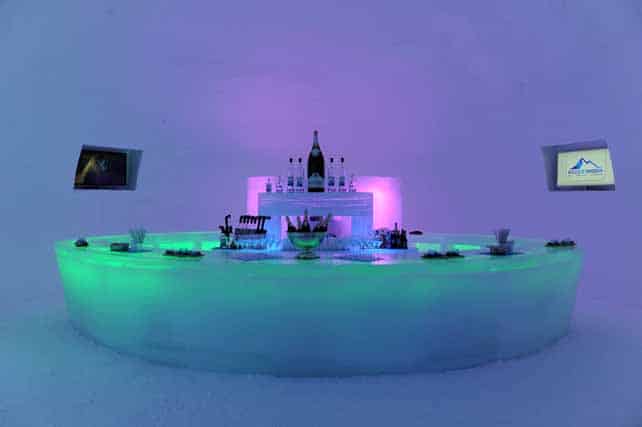
On the slopes of Schmitten, above Zell am See, the two-storey Schnaps-Hans Alm-Bar claims to be the biggest apres-ski bar in the Alps. It offers eclectic music ranging from retro rock and Blues to R&B, soul, and current hits. Classical music is played in the afternoons. The mix of sounds attracts all ages, along with the Vitamina Potenzia and Schiwasser drinks served here.
“Pinzgauer Diele and Villa Crazy Daisy are the places to party at night,” said Stephanie Staszko from SkyParkSecure. “Thursday night was the night to go out it seemed…we got in there for 5-ish and it was absolutely packed. Crazy Daisy was great for late-night partying and they have live bands on there doing English covers at about 9.30pm on most nights.
“Apres ski was fab at K1’s next door to Diele’s. There is an ‘Outsider’ which was basically an area outside the club with heat lamps, a bar and party tunes playing. It was always very busy there until around 7pm.
“For a more laid back scene there is A Bit of Irish, which was a quiet Irish-Alpine pub run by a lovely chap. There is also O’Flannagan’s which is the other Irish pub – very cosy and a great place to chill and have drinks at night”.
Kaprun’s nightlife is more muted. Pavillon is a natural gathering point, and Kitsch & Bitter has regular live bands. The Baumbar has been here for many years and caters for night owls.
Close to the village is the 20.000m² Tauern Spa, which is a day spa with a dozen swimming-pools, sauna and steam rooms, treatment rooms, relaxation areas, restaurants and hotel rooms.
For a completely different experience, go up the mountain to Ice Camp Kitzsteinhorn. It is made up from four interconnected igloos, which are in place from the beginning of January to mid-April each year. Inside the 5,000sq metre area is an ice bar (try the exclusive Ice Camp Pure Glacier vodka), ice cinema, ice lounges and a food court.
Meanwhile, in Summer…
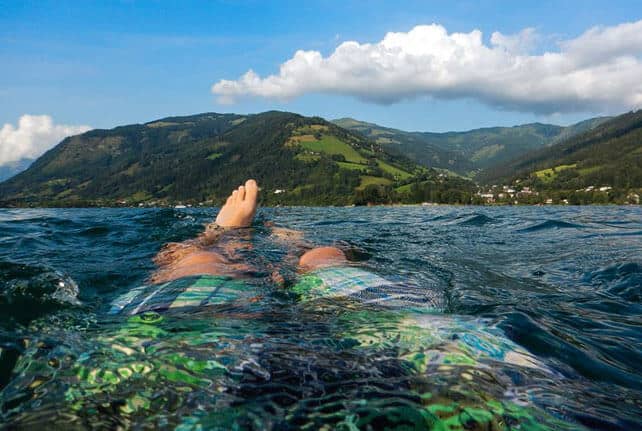










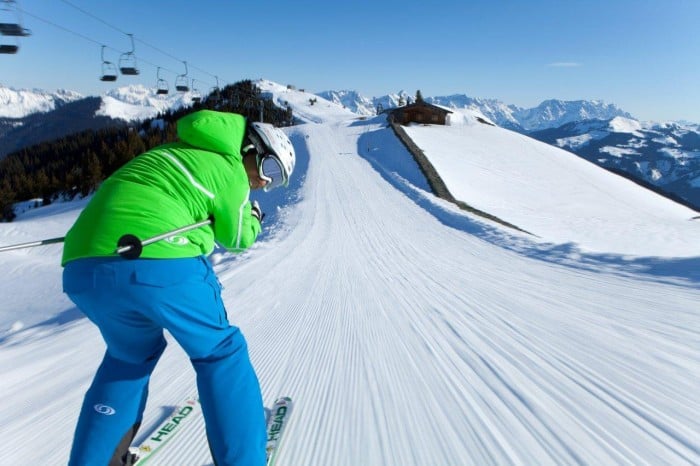
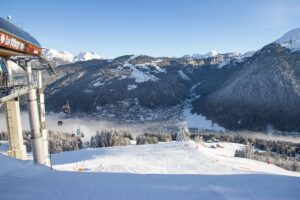
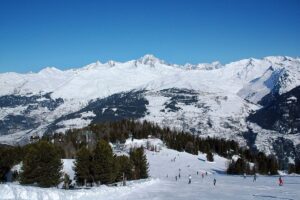
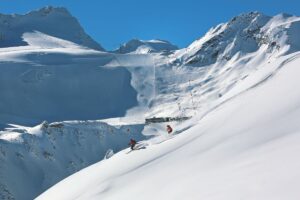
We were in Kaprun in late January and found that the skiing was great but as Felice said it was testing getting to the bottom of most of the runs in icy conditions …in act the black runs down the middle were a better bet than the supposedly easier run down to Schuttdorf…you didnt have to avoid hordes of beginners and fallen bodies..especially if you needed to catch a bus to Kaprun ..no queues in the central bus station whereas you fought to get on in Schuttdorf
I stayed in Kaprun in January and quite enjoyed the place the bus service in either direction was excellent and it is an ideal place to stay to enable skiing in either resort. The run down to Schuttedorf was great early on but in the evening it became very icy and was filled with falling beginners as it is supposedly the easiest way down …I found the most convenient way down was the run down the under the City Express lift ..there is a blue trail but the black isn’t that bad and the benefit is that you can catch the bus in the centre of Zell with no queues ..by the time it gets to Schuttedorf its crammed..
A nice place great for a weeks skiing ..